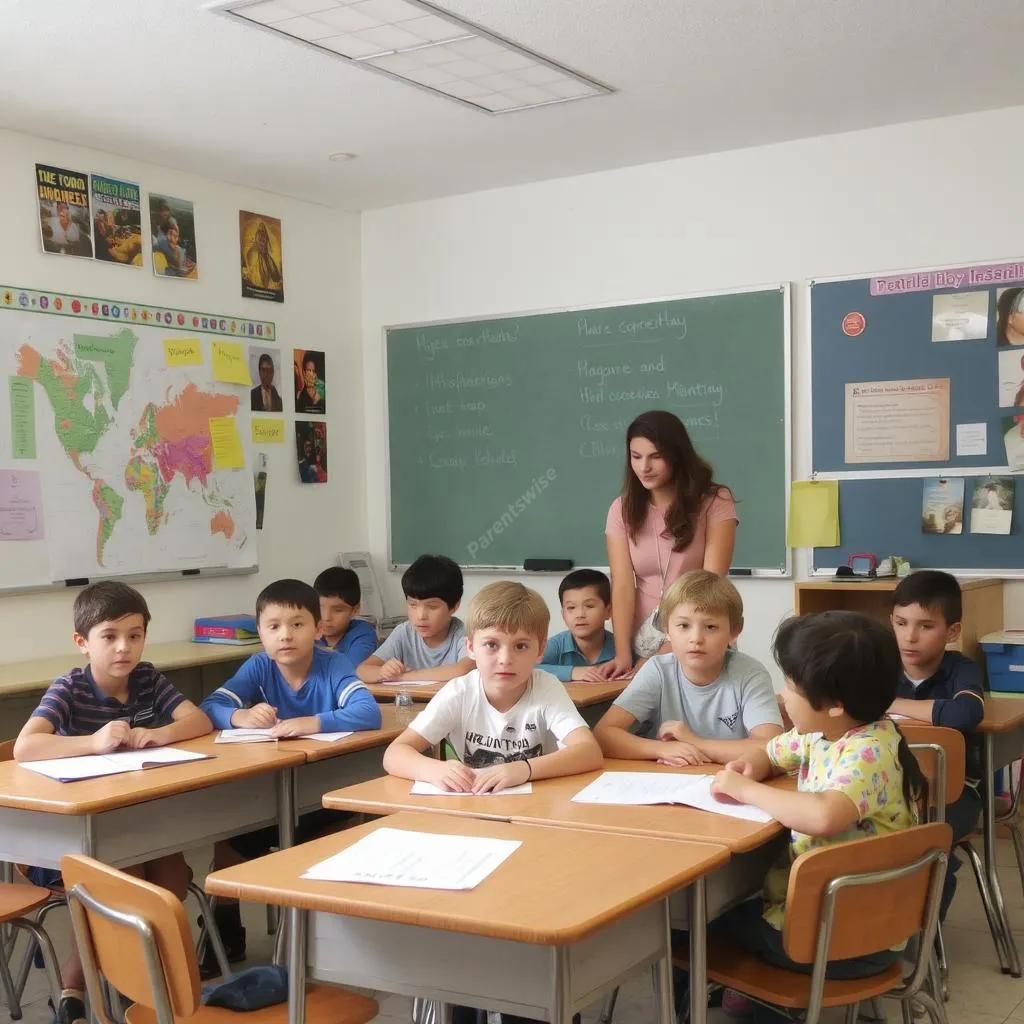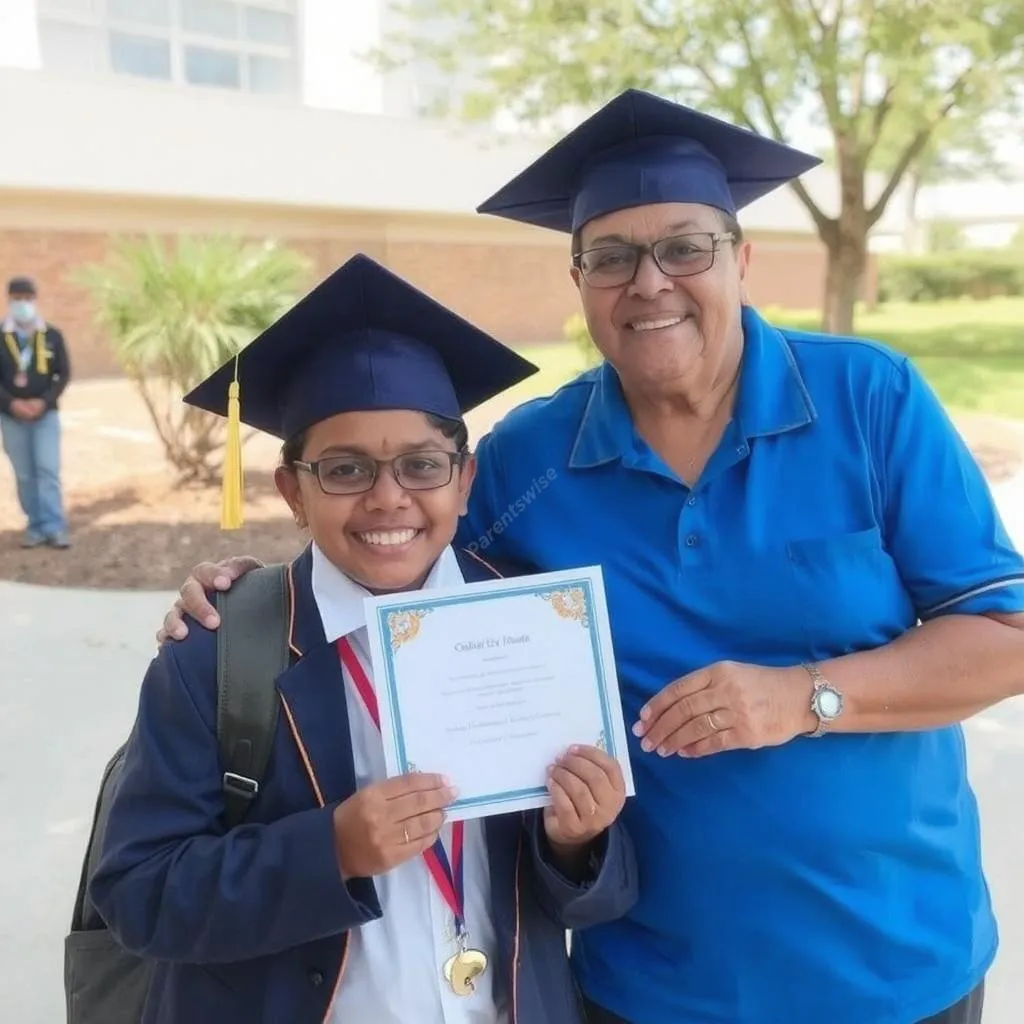What Rights Does Your Special Needs Child Have in School?

I. Introduction
Special Needs Education: Know Your Child’s Rights
Did you know that 7.3 million students in the U.S. get special education? If you have a child with special needs, knowing their school rights is key. This knowledge helps you support your child better. It also helps create a good learning space for them.
In this post, we’ll look at your special needs child’s key rights in school. We’ll focus on big laws like the Individuals with Disabilities Education Act (IDEA) and Section 504. By the end, you’ll know how to make sure your child gets the help they need to do well in school.
Why Understanding These Rights Matters:
- It helps you speak up for your child
- It ensures your child gets proper support
- It creates a better school experience for your child
Are you ready to learn more? Let’s dive into the world of special education rights!
II. Understanding Special Education Laws
Key Laws Protecting Your Child
Two main laws protect your special needs child in school. Let’s look at each one:
A. Individuals with Disabilities Education Act (IDEA)
IDEA is a big law that helps kids with disabilities. Here’s what it does:
- Ensures free appropriate public education for eligible children
- Requires schools to make Individualized Education Programs (IEPs)
- Covers kids from birth to age 21
- Focuses on special education and related services
Who’s eligible for IDEA?
Kids with these conditions may qualify:
- Learning disabilities
- Autism
- Speech or language issues
- Serious emotional problems
- And more
B. Section 504 of the Rehabilitation Act
Section 504 is another important law. It stops discrimination against people with disabilities.
IDEA vs. Section 504: What’s the Difference?
| IDEA | Section 504 |
|---|---|
| Focuses on special education | Covers all school activities |
| Has specific disability categories | Has a broader definition of disability |
| Provides an IEP | Provides a 504 plan |
| Only for K-12 students | Covers all ages |
Why These Laws Matter
These laws make sure your child gets the right help in school. They protect your child’s right to learn and grow.

III. The Right to Free Appropriate Public Education (FAPE)
What is FAPE?
FAPE stands for Free Appropriate Public Education. It’s a key right for your special needs child. But what does it really mean?
FAPE Explained:
- Free: You don’t pay for special education services.
- Appropriate: Meets your child’s unique needs.
- Public: Provided by public schools.
- Education: Helps your child learn and grow.
FAPE ensures your child gets the right support to learn well. It’s not just about being in school. It’s about getting a good education that fits your child’s needs.
What Might FAPE Include?
FAPE can look different for each child. Here are some examples:
- Special teaching methods
- Speech therapy
- Physical therapy
- Help with behavior
- Assistive technology (like special computers)
- Changes to the classroom setup
- Extra time for tests
- Modified homework
Remember: FAPE is about what your child needs, not what’s best for the school.
Why FAPE Matters
FAPE gives your child a chance to learn like other kids. It helps them reach their full potential. With FAPE, your child can get the tools they need to succeed in school and life.

IV. Individualized Education Program (IEP)
Understanding Your Child’s IEP
An IEP is a key tool in special education. Let’s break it down:
A. What is an IEP?
An IEP is a written plan for your child’s special education. It’s like a roadmap for your child’s learning. The school makes this plan with you, the parent.
Purpose of an IEP:
- Sets learning goals for your child
- Lists the services your child will get
- Explains how progress will be measured
B. Key Components of an IEP
Every IEP must include:
- Your child’s current performance in school
- Annual goals for your child
- Special education services to be provided
- How much time your child will spend in regular classes
- How progress will be measured and reported to you
- Accommodations for tests
- When services will start, how often, and for how long
C. Your Rights in the IEP Process
As a parent, you play a big role in your child’s IEP:
Parental Involvement:
You have the right to be part of all IEP meetings. Your input is important. You know your child best and can share valuable insights.
Right to Disagree and Seek Resolution:
- You can disagree with the IEP
- You can ask for changes
- You can request a new IEP meeting
- You can seek mediation if you can’t agree with the school
- You have the right to a due process hearing as a last resort
Remember: You’re an equal partner in your child’s education. Don’t be afraid to speak up!

V. Least Restrictive Environment (LRE)
Understanding LRE: Where Your Child Learns
The idea of Least Restrictive Environment is crucial for your child’s education. Let’s explore what it means:
What is LRE?
LRE means that your child should learn alongside non-disabled peers as much as possible. It’s about finding the right balance between support and inclusion.
Key Points:
- Your child should be in regular classes when possible
- Special classes or separate schools are used only when necessary
- The goal is to keep your child in the most “normal” setting that meets their needs
Why LRE Matters:
- It helps your child feel included
- It can boost social skills
- It prepares your child for life after school
Spectrum of Placement Options
Here’s a simple flowchart of LRE options, from least to most restrictive:
[Regular Classroom] → [Regular Classroom with Support] → [Part-time Special Education Class] → [Full-time Special Education Class] → [Special School] → [Home or Hospital Instruction]Remember:
- The right placement depends on your child’s unique needs
- Placement can change as your child’s needs change
- You have a say in your child’s placement
Making the LRE Decision
The IEP team (including you) decides on the right environment. They consider:
- Your child’s abilities
- The support your child needs
- The impact on other students

VI. Evaluation and Assessment Rights
Understanding Your Child’s Evaluation Process
Evaluations are crucial for your child’s special education. They help determine what support your child needs. Let’s look at your rights in this process:
A. Initial Evaluation Process
- You or the school can request an evaluation
- The school needs your written consent before testing
- Evaluation must be done within 60 days of your consent
- Tests should cover all areas of suspected disability
Key Rights:
- You can request an evaluation at any time
- The school must use various tests, not just one
- Tests must be in your child’s native language
B. Reevaluation Rights
- Your child should be reevaluated at least every three years
- You can request a reevaluation sooner if needed
- The school needs your permission for reevaluation
Remember:
- You can refuse a reevaluation
- The school can’t reevaluate more than once a year unless you agree
C. Independent Educational Evaluations (IEE)
An IEE is an evaluation by an expert who doesn’t work for the school.
When and How to Request an IEE:
- You can ask for an IEE if you disagree with the school’s evaluation
- The school must either provide the IEE or file for a hearing
- If approved, the IEE is at no cost to you
Why Request an IEE?
- To get a second opinion
- To challenge the school’s findings
- To gather more information about your child’s needs
Important: The school must consider the results of an IEE, but they don’t have to follow its recommendations.

VII. Discipline and Behavior Support
Protecting Your Child’s Rights During Discipline
Children with special needs have specific protections when it comes to school discipline. Understanding these can help you advocate for your child.
Key Protections:
- Schools can’t punish your child for behavior caused by their disability
- Your child can’t be suspended for more than 10 days without special procedures
- The school must keep providing education services during long suspensions
Manifestation Determination:
If your child faces suspension for more than 10 days, the school must hold a meeting to decide if the behavior was related to their disability. This is called a manifestation determination.
Functional Behavioral Assessments (FBA) and Behavior Intervention Plans (BIP)
These are tools to help manage behavior issues:
FBA (Functional Behavioral Assessment):
- Looks at why your child is having behavior problems
- Identifies what triggers the behavior
- Helps understand what your child gains from the behavior
BIP (Behavior Intervention Plan):
- Based on the FBA results
- Creates a plan to prevent problem behaviors
- Teaches new, positive behaviors
- Explains how staff should respond to behaviors
When are FBA and BIP Used?
- When behavior interferes with learning
- After repeated disciplinary actions
- When considering a change in placement due to behavior
Remember:
- You can request an FBA at any time
- The BIP should be part of your child’s IEP
- The plan should be reviewed and updated regularly

VIII. Transition Planning
Preparing Your Child for Life After School
Transition planning is a crucial part of your child’s education as they approach adulthood. It helps prepare them for life after high school.
What is Transition Planning?
Transition planning is the process of setting goals and creating a plan for your child’s future after high school. It’s a key part of the IEP process.
When Does It Start?
- Must begin by age 16
- Some states start as early as age 14
- It’s never too early to start thinking about it
Key Elements of Transition Planning:
- Education goals (college, vocational training)
- Employment goals (job training, career exploration)
- Independent living skills
- Community participation
- Health and medical needs
Your Child’s Role:
- Your child should be involved in the process
- Their interests and preferences should guide the plan
- It’s a chance for them to learn self-advocacy skills
Important Aspects:
- Assessments to identify strengths and needs
- Specific, measurable goals
- Services and supports needed to reach goals
- Connections to adult service agencies if needed
Remember:
- The plan should be reviewed and updated yearly
- It should be flexible and change as your child’s needs and goals change
Why Transition Planning Matters:
- Helps your child move smoothly into adult life
- Increases chances of success after high school
- Ensures necessary supports are in place

IX. Dispute Resolution Options
Resolving Disagreements with the School
Sometimes, you might disagree with the school about your child’s education. When this happens, you have several options to resolve the dispute.
A. Mediation
- A neutral third party helps you and the school reach an agreement
- It’s voluntary – both you and the school must agree to it
- It’s confidential and less formal than a hearing
- The mediator doesn’t make decisions, but helps you find a solution
When to Use: For less complex issues or when you want to maintain a good relationship with the school
B. Due Process Hearings
- A formal legal procedure, similar to a court trial
- An impartial hearing officer listens to both sides and makes a decision
- You can bring witnesses and present evidence
- You have the right to have a lawyer represent you
When to Use: For serious disagreements or when other methods haven’t worked
C. State Complaints
- You file a written complaint with your state’s education agency
- The state investigates and decides if the school violated the law
- Usually must be resolved within 60 days
- Can address systemic issues affecting more than one child
When to Use: When you believe the school has violated special education laws
Important Tips:
- Try talking to the school first before using these options
- Keep good records of all communications with the school
- Know your deadlines – there are time limits for filing complaints
Remember: These options are your right. Don’t be afraid to use them if you feel your child’s needs aren’t being met.
X. Tips for Advocating for Your Child’s Rights
Empowering You to Support Your Child
As a parent, you’re your child’s best advocate. Here are some practical tips to help you effectively stand up for your child’s rights:
- Know the laws: Understand IDEA, Section 504, and your state’s special education laws.
- Keep detailed records: Save all paperwork, emails, and notes from meetings.
- Communicate clearly: Express your concerns and requests in writing.
- Be prepared: Before meetings, write down your questions and concerns.
- Stay calm: Even when frustrated, remain respectful and focused on solutions.
- Build relationships: Work to create positive partnerships with teachers and staff.
- Attend all meetings: Your input is crucial in IEP and other educational meetings.
- Ask questions: If you don’t understand something, ask for clarification.
- Trust your instincts: You know your child best. Speak up if something doesn’t feel right.
- Seek support: Connect with other parents or join support groups for advice and encouragement.
Resources for Further Information and Support:
- Parent Training and Information Centers (PTIs) in your state
- Council of Parent Attorneys and Advocates (COPAA)
- Understood.org
- Wrightslaw.com
- National Center for Learning Disabilities (NCLD)
Remember: Advocacy is an ongoing process. Stay informed, be persistent, and always focus on your child’s needs.

XI. Conclusion
Empowering Your Child’s Educational Journey
As we wrap up our discussion on your special needs child’s rights in school, let’s recap the key points:
- Know the laws: IDEA and Section 504 protect your child’s right to education.
- Understand FAPE: Your child deserves a free, appropriate public education.
- Participate in the IEP process: You’re a crucial member of your child’s educational team.
- Consider LRE: Your child should learn in the least restrictive environment possible.
- Stay involved in evaluations: Regular assessments help track your child’s progress.
- Be aware of discipline protections: Your child has special rights in disciplinary situations.
- Plan for transitions: Prepare early for your child’s life after high school.
- Know your dispute options: You have ways to resolve disagreements with the school.
Remember: Your role as a parent advocate is vital. By understanding your child’s rights, you’re taking a big step towards ensuring they receive the education they deserve.
Moving Forward:
- Stay informed about your child’s rights and educational options
- Keep communication open with your child’s school
- Don’t hesitate to seek help or use dispute resolution options when needed
- Celebrate your child’s progress and achievements along the way
Your child’s educational journey may have challenges, but with your advocacy and the right support, they can thrive and reach their full potential. Keep pushing for what your child needs – your efforts make a real difference in their life and future.

